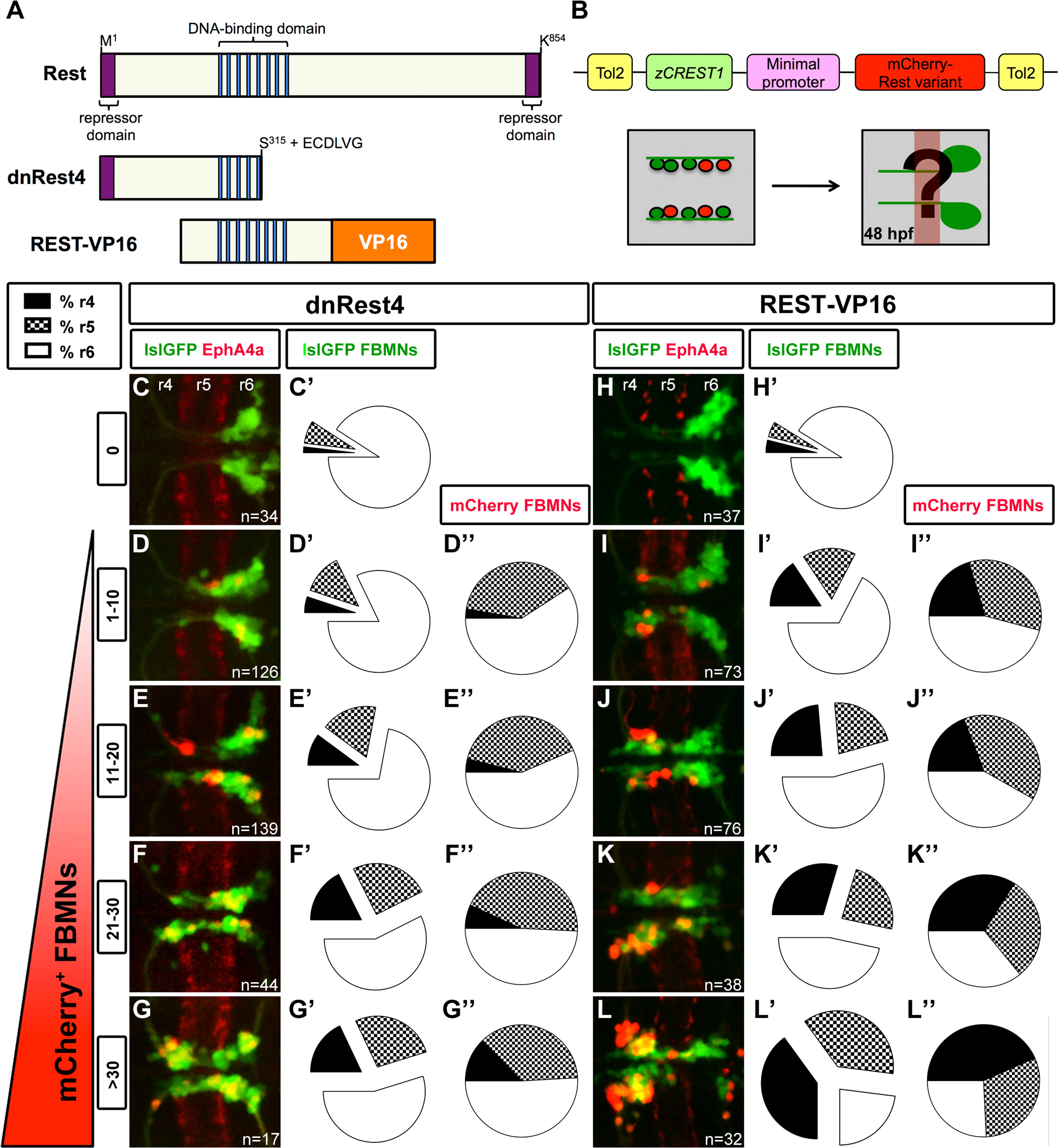Fig. 2
Rest function is required within FBMNs for their normal migration. (A) Schematic of Rest protein domains, including eight zinc finger DNA binding domains, and corepressor binding domains at amino and carboxy termini. Dominant negative Rest4 (dnRest4) is a truncation of zebrafish Rest with ECDVLG (human sequence) added at the C-terminus (Mapp et al., 2011). REST-VP16 comprises human REST DNA-binding domain fused to VP16 activator with both corepressor binding domains removed (Immaneni et al., 2000). (B) Schematic of Tol2-mediated transgenesis to express mCherry-tagged constructs specifically in FBMNs. Coinjection of DNA constructs with transposase mRNA produces mosaic expression in Tg(islet1:GFP) FBMNs; migration was analyzed at 48 hpf, with r5 marked by EphA4a (red). Embryos classed according to number of mCherry+ FBMNs into five groups: zero (controls, C and H), 1–10, 11–20, 21–30, and >30; n= # embryos analyzed. (D–G) Increasing number of dnRest4 expressing FBMNs progressively disrupts migration. (I–L) Increasing number of REST-VP16 expressing FBMNs causes a greater disruption in migration. (C′–L′) Counts of Tg(islet1:GFP) FBMNs (green) in r4 (black), r5 (checkered) and r6 (white). A greater number of FBMNs remain in r4 and r5 as more FBMNs express each construct. (D′′–L′′) Counts of mCherry+ FBMNs (red/yellow) in each group of mCherry-expressing embryos. mCherry+ FBMNs are distributed in all three rhombomeres, suggesting FBMNs migrate as a collective group. Split channel images confirmed that all mCherry+ cells were also GFP+ as expected.
Reprinted from Developmental Biology, 401(2), Love, C.E., Prince, V.E., Rest represses maturation within migrating facial branchiomotor neurons, 220-35, Copyright (2015) with permission from Elsevier. Full text @ Dev. Biol.

